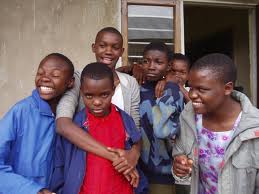My background in Tanzanian education
When I was a science teacher in NSW (1966 to 1983), I used to read the missionary bit of TCF news, in fear and trembling: “What if God calls me to go to another country, or even the Northern Territory?” I was very well established in my profession and I didn’t plan to go anywhere else, thank you very much. I’d breathe a great sigh of relief if there were no science teachers on the list of teachers needed!
In January 1983, I slipped up. I went to CMS Summer School at Katoomba. (I had overlooked what the “M” stands for). I saw a friend, of similar age and career, being interviewed as she was about to head off for special missionary training on her way overseas. And God challenged me. Australia is well supplied with teachers, plenty of whom are Christians. If I am a serious Christian, committed to following Jesus, how could I not at least consider the possibility that he might want to me go somewhere else, where the needs for Christian teachers are much greater? I did explore it (with the prayer, “Lord, if this is not from you, stop me!”) and three years later I was setting off for Tanzania. In eight years, I taught secondary science, then RE and then in a Bible school. A few years after my return to Australia, much to my surprise, I got married. In 2005 both of us were invited to go and help the Diocese of Ruaha start a secondary school, at Kilolo, about 40 km SE of Iringa in Tanzania. We did that for 6 years, then spent about 15 months helping the church establish a new diocese.
So what’s the education scene in Tanzania like?
At the time of Independence in 1961, the aim was to give secondary education to about 1-2% of each cohort that finished primary school. Typically children started primary school aged about 8 or 9, with the idea that when they finished the seven classes, they would be young adults (aged 15 – 17).
Primary education is Swahili medium for all classes. In classes 5, 6 and 7, they start to learn English as one of their subjects. All secondary schools are English medium; this is a massive challenge for the vast majority of students. There is a national exam at the end of class 7. Children who do not pass these exams cannot go on with their education; they are not allowed to repeat. Selection for secondary school is based on the class 7 results, but not all who pass are selected. Everyone who is selected must go; parents may be fined or even jailed if they don’t. And it costs.
A secondary school has students in Grades 1 to 4. There is a national exam at the end of Grade 4, for selection to a high school, which has Grades 5 and 6.
The number of secondary schools increased steadily after independence, and then, from about 2000 or so, under international pressure, the number has ballooned, at least doubling in the 7 years from 2005 to now. There is a serious shortage of secondary teachers, especially for schools in remote villages that have minimal or no services in health, banking, shopping, electricity, water supply or transport. Most of the new schools are seriously understaffed; most have no books, no science laboratory or equipment, no sports equipment. Students are often required to bring their own desk and chair (or sit on the floor or an upturned bucket).
The 2012 Disaster
The results for the 2012 national examinations for Grade were announced in February 2013. Nationwide, more than 60% of the students (ie about 240,000 young people) failed outright (ie, did not manage to pass two of their seven subjects at 21%). This touches every family in the country.

Contributing Factors to the Disaster
- Huge increase in the number of schools and students without commensurate increase in teachers and the support they need.
- Using a very academic curriculum designed for the top 1-2% of the cohort, when the secondary schools are now getting about the top 40-50%
- The level of teaching in primary schools has decreased over all, especially in remote schools. Typical primary class has about 100 students.
- The massive cost of education to the local village community. School fees go out of the village economy; school students are not available to work in the family field – a big problem for widows.
Likely results
- 240,000 young people whose hopes were raised by promises such as “Education is the key to life”, “Education is your redemption” (typical school mottoes!) now have reached a sudden dead end. What will they do now? Where is their hope for the future?
How might we respond?
- Pray for Tanzania, especially for our Christian brothers and sisters there, whose children are suffering.
- Pray for Christians to know and show where is our real key to the future and who is our Redeemer.
- Consider whether God is calling us to support education there by helping a school to buy resources, sponsoring students, going as a secondary teacher or as a teacher educator.
By the way, I reckon it’s true that what I gained by going far exceeds what I lost when I went, even on this earth. Teaching in Tanzania has its challenges, but it has great rewards and delights as students are keen to learn.
Dianne Phillis (nee Parkes)